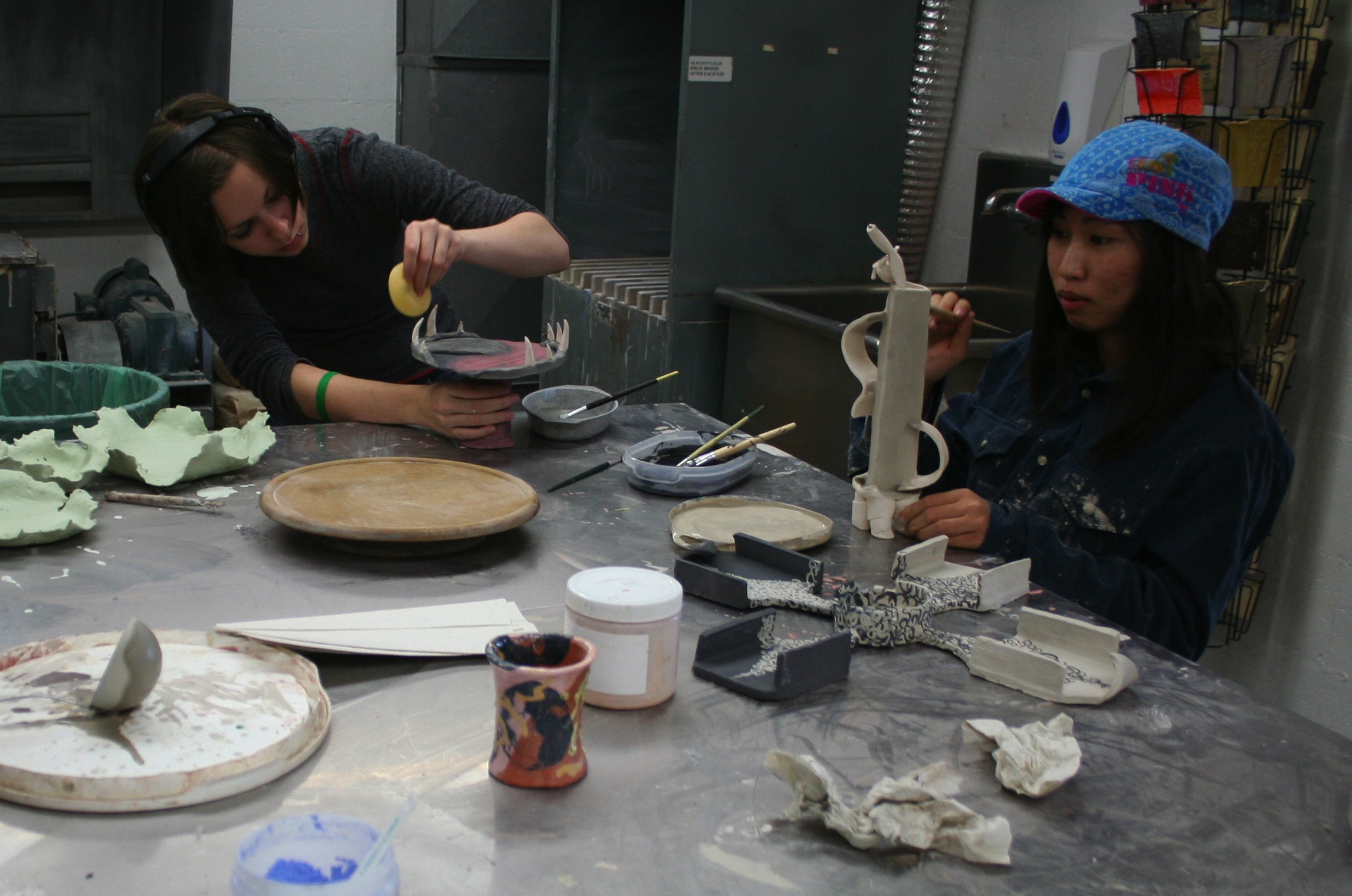There is an art taught at Gustavus that is over 5,000 years old. It even precedes the art of decorating a frost-your-own cookie! For millennia, people have been turning clay into pottery and ceramics. Artists like these work right here at Gustavus. Visiting Assistant Professor of Art and Art History Nicole Roberts Hoiland teaches classes in this ancient art form at both Gustavus and the Art Center of St. Peter.
Undergraduate school was where Professor Hoiland was first exposed to clay. “I had an instant connection with the material, and [I had] an amazing professor,” Hoiland said.
She pursued the medium further, eventually landing herself here at Gustavus where she enjoys sharing her knowledge of the art with students. “Teaching ceramics is very rewarding. I have the chance to meet a lot of students with many different interests. It is a good challenge to help them engage in the arts through this medium,” said Hoiland. Students enjoy Hoiland’s classes and working with clay. Many students will tell you that there is something particularly special about being able to create something with your own hands. “For me, it’s awesome to be able to take clay, which is just mud from the ground, and create something that is both art and a functional piece that can be used daily,” Senior Management Major Jon Schmidt said.
“Working in clay provides me with a unique opportunity to leave behind the stresses and difficulties of a day and focus on something new. In ceramics, you can turn clay from mud to beautiful form, and finally into something you can use. This has always given me the sense that ceramics is akin to alchemy,” Senior Mathematics Major Andrew Tilman said.
Working with clay can also present artists with exciting new perspectives on their own artwork. “Since it’s not perfect and each piece is unique, you can constantly find something different about the shape, form or glaze. Sometimes those unique features come out great, other times you try to avoid those mistakes in your pieces in the future,” Schmidt said.
“Opening the kiln for the last step in the process is the most exciting part. All the time spent in the whole process leads up to how the piece comes out. Sometimes it can make you extremely happy, while other times you just want to cry,” Schmidt said.
Clay is a very versatile medium that can be stretched and manipulated to form almost any shape.
“As an Art Education major, I have taken many art classes, but nothing is quite like ceramics. It amazes me how different every artist uses and forms clay. I have taken wheel thrown ceramics and I am currently in hand built ceramics, and the structures, forms and ideas are completely different even though you are using the same exact medium. Clay can be shaped into such a variety of amazing things, which is why I love ceramics,” Education Major Elise Biewen said.
Working with clay is not as easy as it may appear. “Working in clay is hard. It takes a vast knowledge of the material, kilns and chemicals, just forthe work to survive. There is a big learning curve, and I would guess 85 percent of my students have no idea about this little fact as they walk through that door the first time. I don’t lose too many [students], so that definitely speaks to the allure of the material,” Hoiland said.
Hoiland provides not only a great experience with pottery on campus, but within the community of St. Peter as well. “I am the Clay Center Coordinator at the Art Center of St. Peter. We run wheel and hand building classes for community members, which of course includes Gustavus students. I have an excellent teaching staff, some of them are Gustavus alumni. We are always trying to get students involved in our classes and activities,” Hoiland said.
If you are interested in ceramics, check out some of the classes offered here at Gustavus and at the Arts Center or contact Professor Hoiland.
Photos by Lindsay Lelivelt.

I am from scotland and have found your blog very educational.